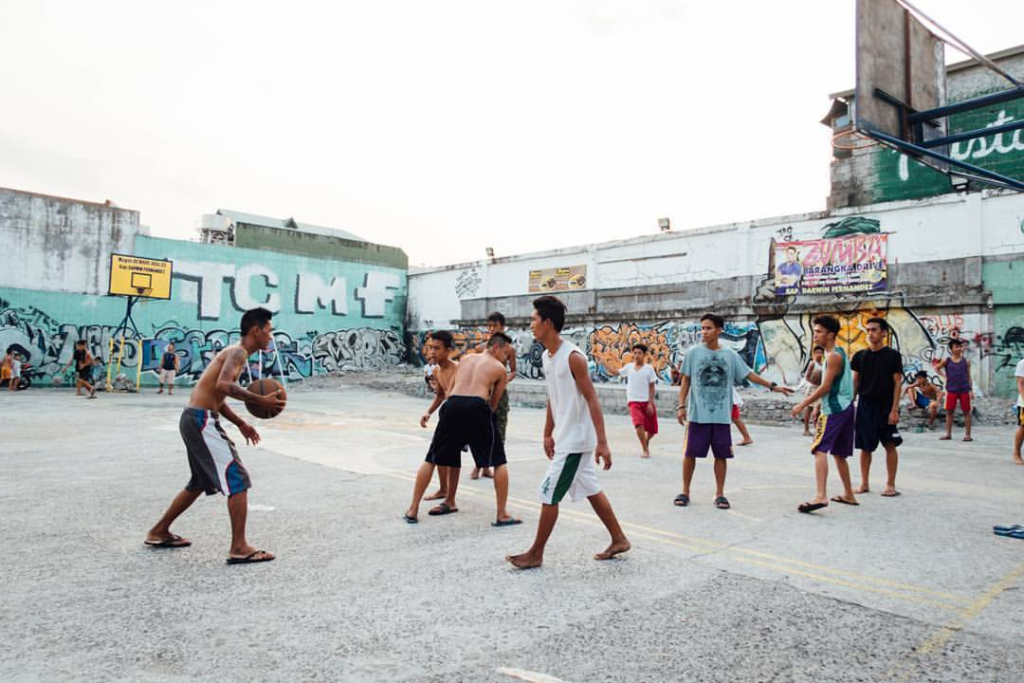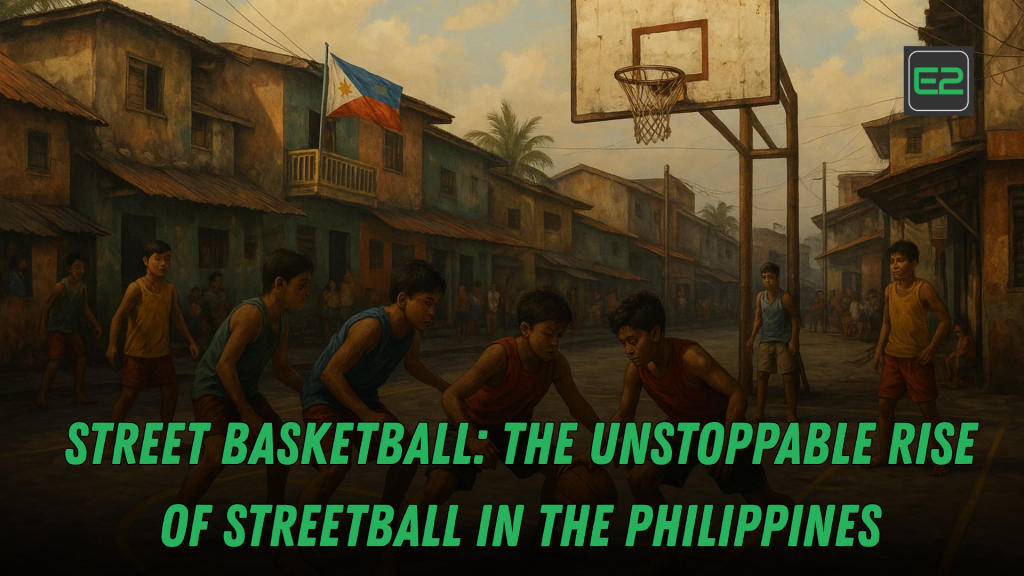STREET BASKETBALL: In the heart of every Filipino neighborhood — whether it’s a bustling city street in Manila or a quiet barangay in the province — there’s one unmistakable sight: a makeshift basketball court. Sometimes it’s a rusty rim nailed onto a coconut tree. Other times, it’s a full-blown half-court built from cement and heart. This is not just a game. Street basketball in the Philippines is a culture, a language, a shared pulse of the nation.
Table of Contents
Why Basketball Clicked in the Philippines
The love for street basketball in the Philippines dates back to the early 20th century when American colonizers introduced the sport. It quickly took root for several reasons:
- Affordability: All you need is a ball and a hoop — no grass fields, expensive gear, or massive space.
- Space-Friendly: Basketball fits perfectly into cramped urban areas. One small slab of concrete is enough for a game.
- Fast-Paced: Filipinos naturally gravitate to fast, high-energy activities. Basketball’s speed and rhythm are a natural match.
- Influence of American Culture: Exposure to NBA games and the influence of American sports media gave it an aspirational appeal.
- National Programs: From barangay tournaments to national leagues like the PBA and UAAP, there’s always a platform to play — and dream.

The Makeshift Courts: Symbols of Hope
In many Filipino streets, basketball hoops are welded from scrap metal. Backboards are crafted from old plywood. These are not regulation courts — they’re works of art and resourcefulness. Here’s why these local courts matter:
- They’re community hubs. Boys, girls, fathers, uncles — everyone gathers here.
- They spark dreams. Kids dream of becoming the next Jordan Clarkson or Scottie Thompson right from these concrete slabs.
- They build character. Hustle, teamwork, trash talk, and resilience are all learned here.
READ HERE ABOUT: FIBA ASIA CUP 2025: EVERYTHING YOU NEED TO KNOW
Urban Games: More Than Just a Pastime
In the urban sprawl of Metro Manila, basketball games erupt during late afternoons. Teams are often formed informally — shirts vs. skins — and the games get heated, but rarely hostile. In fact, many friendships are born from hard fouls and tight scores.
Tournaments are held on street corners with tarpaulin banners and makeshift bleachers. They’re funded by local businesses or barangay councils. Winning isn’t just about bragging rights — there are trophies, jerseys, and sometimes even cash prizes.
Media, Idols, and The NBA Effect
Filipino fans are among the most passionate NBA followers in the world. The names Kobe, Jordan, Curry, and LeBron are shouted just as often as June Mar Fajardo, Japeth Aguilar, or CJ Perez in the streets.
TV coverage, social media, and online streaming have made it easy for fans to watch both local and international games, further fueling the obsession. Kids try to emulate Kyrie’s handles, Steph’s shooting, or Jimmy Butler’s hustle right on the sidewalks.

What Makes Street Basketball Unique in the Philippines?
- It’s inclusive – Rich or poor, tall or short, anyone can play.
- It’s adaptive – Whether there’s rain, heat, or power outages, the game goes on.
- It’s expressive – Street ball brings creativity and flair, from fancy layups to self-made “highlight reels” recorded on phones.
- It’s identity-forming – For many, basketball defines their youth, their values, and their friendships.
Street Basketball Legends and Future Stars
Some of the Philippines’ greatest players started on the streets. Before playing under bright arena lights, they were battling for pride on dusty courts with no referees. From barangay leagues to college teams and eventually the PBA or national squads, street ball is the pipeline.
Local legends — the guy who never missed a three in the corner, or the kid who dunked on a full-sized rim at 16 — are respected almost as much as pros.

Summary
Street basketball in the Philippines is more than a sport — it’s a reflection of Filipino life. It’s built on resilience, creativity, community, and an undying love for the game. From rundown rims to roaring barangay tournaments, every dribble and every shot echoes the same message: this is where dreams begin.
Whether you’re an elite athlete or just a kid with slippers for shoes and a borrowed ball, the court is always open — and the game is always on.
